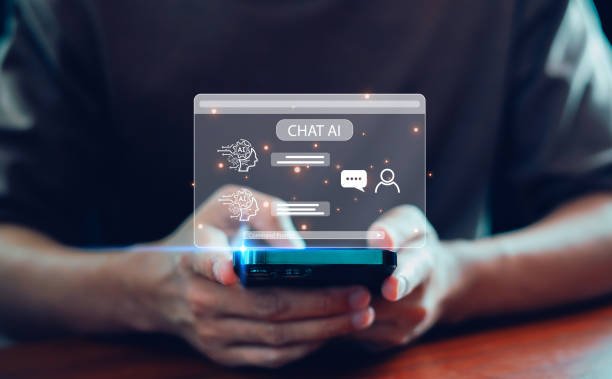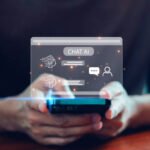The Unseen Risks of Seeking Certainty from Artificial Intelligence
🌐 Introduction: When Smart Tools Trigger Mental Loops
AI chatbots like ChatGPT have revolutionized how we communicate and learn. From solving academic problems to writing poetry and offering emotional support, they’re accessible 24/7 and almost endlessly responsive. 📲✨
But what happens when a person with Obsessive-Compulsive Disorder (OCD) turns to ChatGPT for relief from anxiety? Instead of easing their symptoms, this constant interaction can sometimes deepen compulsive behaviors. The very tool meant to help may unknowingly feed a dangerous loop.
Let’s explore how OCD works, how AI can reinforce its cycles, and how users can protect their mental health while still benefiting from digital tools.
🧠 Understanding OCD: Obsessions and Compulsions
Obsessive-Compulsive Disorder (OCD) is a mental health condition marked by:
🔁 Obsessions
- Intrusive, unwanted thoughts, images, or urges (e.g., “What if I hurt someone?” or “Did I sin and not confess?”)
- These thoughts often trigger significant anxiety, guilt, or fear.
🔁 Compulsions
- Repetitive actions or mental behaviors done to reduce the distress caused by obsessions
- Common compulsions: checking, hand-washing, mental reviewing, and reassurance seeking
📌 OCD is not just about cleanliness or organization—it’s about needing certainty in an uncertain world.
🧠💻 How ChatGPT Can Accidentally Reinforce OCD
AI chatbots like ChatGPT are designed to be helpful, polite, and informative. That’s great—unless you’re unintentionally using them to perform compulsions.
Here’s how:
🗣️ 1. Reassurance Seeking
People with OCD often seek comfort through repeated questions:
“Is this thought normal?”
“Did I make a mistake in my past?”
“Am I going to hell?”
“Am I a bad person for thinking this?”
ChatGPT usually responds in a calm, logical, and empathetic tone—which soothes the anxiety. But this reinforces the idea that relief comes only from reassurance, feeding the loop. 🔄
🔎 2. Checking for Consistency
The same question may be asked repeatedly in different forms:
“Is it okay to have this thought?”
“Are these thoughts harmful?”
“What do others think about this thought?”
The goal? To get the perfect answer. But AI responses vary slightly, which fuels more questions and doubt. This becomes a mental trap.
🔄 3. Compulsion Through Clarification
If the response isn’t exact or feels incomplete, the user may reword their question 10–20 times in a single session. This resembles the compulsive checking seen in classic OCD.
🧠 You’re not “just being thorough”—you’re unknowingly strengthening the OCD loop.
📊 Real-Life Example: A Cycle in Motion
Case: Ada, 24, struggles with intrusive harm thoughts.
She uses ChatGPT to ask if thinking about hurting someone means she’s dangerous. The chatbot assures her it’s common and not reflective of her character. She feels better—but a few hours later, doubts creep back in. She returns and asks again, this time using different wording.
After 10+ rounds, Ada realizes she feels more anxious, not less. She’s in an OCD reassurance loop, and ChatGPT is unintentionally a part of it.
✅ Healthy Ways to Use ChatGPT (Without Feeding OCD)
ChatGPT can still be helpful, especially when used mindfully.
✔️ DO use it for:
- General mental health education 🧘♀️
- Journaling prompts or self-reflection tips ✍️
- Coping strategies like grounding or breathing exercises 🌬️
- Mindfulness ideas or inspiration 🌿
- Motivation or mood boosts (e.g., positive affirmations) 💬
❌ DON’T use it for:
- Repeatedly asking the same questions
- Seeking moral validation or emotional reassurance
- Trying to eliminate doubt or “feel right” about something
- Re-checking thoughts or memories for clarity
🔄 Breaking the Loop: How to Interrupt Compulsive Use
- Awareness is step one 🧠
Notice when you’re asking out of anxiety or guilt, not curiosity. - Pause before you type ⏸️
Ask: “Am I looking for certainty? Or is this part of my OCD?” - Delay the compulsion ⏳
Wait 10 minutes. Most urges weaken over time without being acted on. - Use the discomfort as therapy 💪
Exposure and Response Prevention (ERP) teaches that sitting with anxiety—without doing the compulsion—leads to long-term relief. - Create a chatbot boundary list 📝
Write down “safe” uses for ChatGPT and “off-limits” topics during recovery.
📱 Digital Wellness: Setting Healthy Tech Boundaries
📵 Tech Hygiene Tips:
- Use apps like Freedom or Stay Focused to limit chatbot access
- Designate AI-free hours or “mental health breaks”
- Journal your questions before typing them into ChatGPT—this slows you down
- Practice “radical uncertainty”: allow the doubt to exist without fixing it
💬 Therapist Perspective
“AI tools like ChatGPT can be supportive, but when used for reassurance, they mimic compulsions. In OCD treatment, especially ERP, we try to help clients tolerate doubt, not erase it.” – Dr. Linda Osei, Clinical Psychologist
📌 Final Thoughts: Use AI Responsibly for a Healthier Mind
ChatGPT and other AI chatbots are not inherently harmful. But for users with OCD, particularly those in recovery or without professional guidance, these tools can become digital enablers of compulsion.
The key? Awareness, boundaries, and intentional use.
🧠 AI is a powerful tool—but mental health recovery requires human connection, tolerance of uncertainty, and structured support.
📚 Resources for OCD Support
- 🧠 International OCD Foundation
- 📱 NOCD – Therapy App for OCD
- 🌍 Mind UK: OCD Help & Education
- 💬 7 Cups: Free Online Support
- 📖 “The OCD Workbook” by Bruce Hyman (Highly Recommended Reading)







Leave a Reply